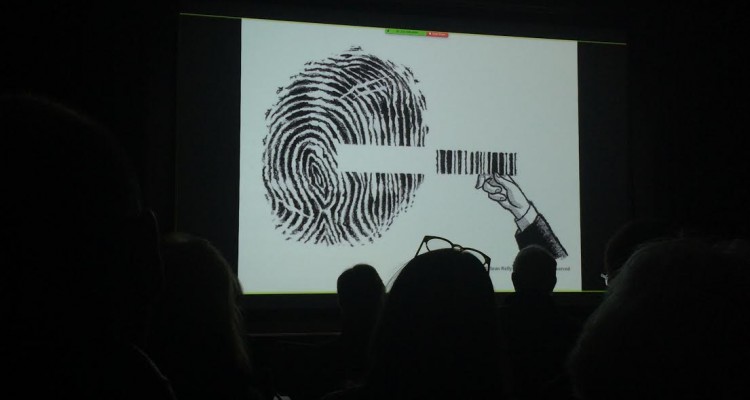Illustrator and political cartoonist Sean Kelly held a presentation on April 5 at the Diffley Boardroom in Bellarmine Hall concerning political cartoons and their impact on American society. Kelly focused on illustrating pictures that accompany articles. He said that he hopes his work is good enough where the readers can understand what the article is about without even reading it. He has been featured numerous times on the Op-Ed page of The New York Times. When he works on a political cartoon, Kelly tries to explore both sides in a topic and not pick a particular side to satirize, playing with all different types of topics and perspectives.
His presentation focused on other artists’ works, but also included some of his own work. He spoke about the history of the political cartoon, saying how the first cartoon printed in America was Benjamin Franklin’s “Join, or Die” cartoon that hoped to bring the 13 colonies together against Britain.
Kelly went on to talk about when political cartoons talk about a certain politician, they focus on a prominent aspect of their physical appearance, such as Nixon’s nose, Carter’s smile, Reagan’s hair and Obama’s ears.
He continued by talking about how symbols are a part of our everyday thoughts and conceptions of things, like the scales of justice, the White House and executive power and the Statue of Liberty as a sign of freedom. Whenever we think about these concepts, these symbols are what often come to mind.
When asked about political cartoons today Kelly responded, “today, political cartoons as a printed vehicle are not as prominent or influential as they used to be.” He does say, however, that the idea of what a political cartoon is has shifted recently. Late night comedy shows such as “Last Week Tonight With John Oliver,” “The Daily Show with Trevor Noah” and “The Colbert Report” all satirize and parody different aspects of the political process, just as political cartoons have been doing for centuries. While on the topic of political satire programs, the point came up about how there really is no right wing comedy show like The Daily Show. Kelly felt that there should be a type of show to balance out how the media satirizes the political field.
According to Kelly, the best living political cartoonist is Pat Oliphant. Kelly said that “he is the most original cartoonist since the 1960’s.” He also said that he considers the most famous cartoonist of all time to be Thomas Nast, who was responsible for bringing down Boss Tweed and his political machine by exposing them in his cartoons. Nast was a big part of his presentation, explaining how influential his cartoons were. Not only did Nast help to curb corruption, but they also affected the political parties as well by popularizing the idea of the Democrats as donkeys and the Republicans as elephants and popularizing the current images of Uncle Sam and Santa Claus.
The presentation as a whole was informative about not only political cartoons, but symbols as a whole and their influence on our society. Symbolism permeates our everyday society, from company logos to physical objects we associate with non-physical ideas. Whenever we see a logo that we recognize, we instantly know which big company it’s associated with. When we see a red elephant or blue donkey, we know right away that it refers to one of the political parties. The instant identification of symbols is what allows political cartoons to convey such large messages in so few pen strokes.


Leave a Reply